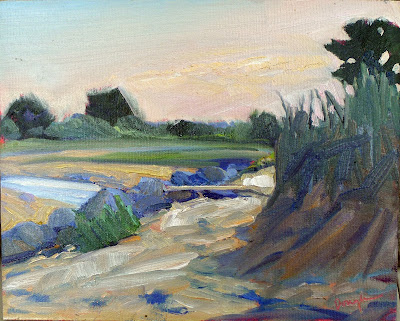What makes one painter stand out in our mind when another doesn’t even create a ripple?
 |
|
River at Belvidere, date unknown, Chauncey F. Ryder, courtesy Blue Heron Fine Art |
I was contemplating the dormant branches of a birch tree when Eric Jacobsen suggested I look at the work of Chauncey Ryder. “Who?” I asked. Eric goggled.
“He’s the reason I became an artist,” he enthused. Once he showed me some images on his phone, I understood, but until that moment, Ryder had never pierced my consciousness.
 |
|
Mín Herðubreið / My Herðubreið, 1938, Gísli Baldvin Björnsson, courtesy Icelandic Times |
My pal Bruce McMillan writes frequently about Icelandic painters on his blog. Without him, I never would have been introduced to the austere abstraction of painters like Louisa Matthíasdóttir or Gísli Baldvin Björnsson. At first, I found them uncomfortably brutal. Recently I’m finding that their exceptionally cool mien speaks to me.
I myself have a long-standing passion for mid-century Canadian and British painters, many of whom are, frankly, quirky. I was thrilled to find the work of Alfred Wallis, a Cornish fisherman who didn’t pick up a brush until he was widowed, past the age of seventy (which ought to be an inspiration to us all). To call his work naïve is to underrate its sheer oddity.
 |
|
The Hold House Port Mear Square Island Port Mear Beach, c. 1932 by Alfred Wallis |
Wallis was ‘discovered’ by mid-century British modernists Ben Nicholson and Christopher Wood in 1928. They brought his work to London; Nicholson even bought one of his paintings and presented it to MoMA. But Wallis never saw himself as anything but a retired St. Ives laborer who painted what he knew—“What I do mosley is what use To Bee out of my memory what we might never see again,” he wrote. It was unnecessary for him to laboriously unlearn the artistic conventions of his time; he’d never learned them in the first place.
I have a deep affection for Tom Thomson and the Group of Seven, but I never saw their work until I was an adult. And yet I grew up a few blocks from the Canadian border, right across the Niagara River from Group of Seven country. Buffalo’s Albright-Knox Art Museum has a very fine Abstract-Expressionist collection because its leading light, Seymour Knox II, was crazy for modernism. His tastes were firmly fixed by New York, so the museum owns nothing of Thomson and his peers. They were too figurative for Mr. Knox’ taste.
 |
|
Evening, (field sketch) 1913. Tom Thomson, courtesy Art Gallery of Ontario, Toronto |
What makes one painter stand out in our mind when another doesn’t even create a ripple? In the past, it might have been a question of what we could see. Outside the major cities we had limited access to the panoply of art being made out there. But that’s not true today. We can all see new art, almost in real time, via social media and online museum shows.
Part of this, I’m sure, comes down to maturity. I probably wasn’t ready to see the quiet beauty of Chauncey Ryder when I was 14 and being dazzled by Clyfford Still. Part of it comes from looking at lots of art. The more I learn, the more I realize how little I know, and the less I’m inclined to quick judgments. But there’s something else there, too, and that’s the response of the soul, which is—simply—ineffable.



































